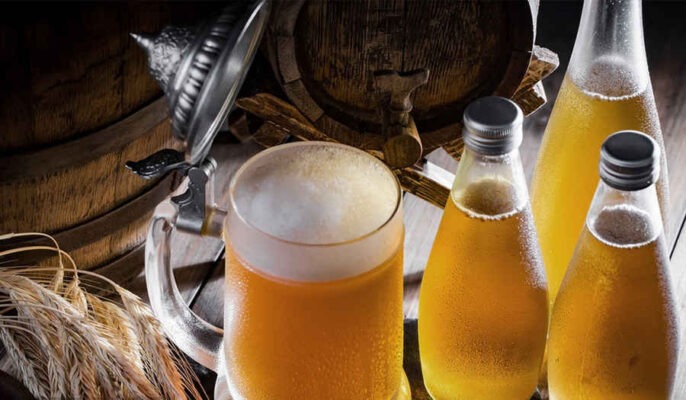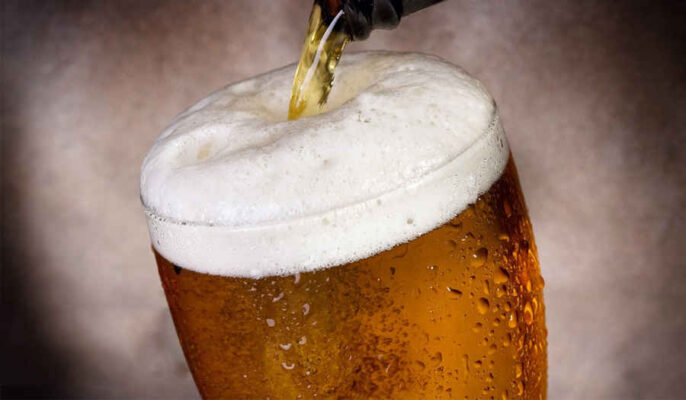You may hear people mention “esters” and “phenols” when perceiving certain aromas in beer. These terms are often used incorrectly or interchangeably. Phenolic flavors and aromas are often described as clove-like, medicinal, smoky, or “Band-Aid” and are considered off-notes in most beer styles.
When beer is described as phenolic, it is usually direct phenolic. Volatile phenols have a low flavor and aroma threshold, and most people taste and smell them in very low concentrations. While volatile phenols are generally frowned upon, some of them are sought after in specific beer types.
Fenoly
Some form of phenol is always present in beer, but when beer drinkers notice they are ingesting “phenol” or describe beer as “phenol,” they are often referring to the aroma of volatile phenols. Phenol is detectable at very low concentrations and often presents as a clove, medicinal or smoky aroma.

Phenols in Cereals and Hops
The polyphenols, obtained from sprouted grains and hops added to beer, are derived from tannins in plants.
They add texture to your beer, enhance the taste, and make the beer feel full-bodied when you taste it. But, at too high a concentration, the polyphenols in the tannins can cause the drinker’s mouth to wrinkle. We see the same effect in wine when the tannins are too high, wine can leave you feeling dry in the mouth, sucking up all the saliva in your mouth and making you crave a glass of water.
The way to reduce tannins and polyphenols is a controlled glycation and jetting regimen. as follows:
- Do not spray water over 77° C (170° F)
- Do not overspray (use the calculated amount of sprayed water)
- Reduce spraying time (if possible)
- Treat the spray water to ensure it is not too alkaline
- Do not squeeze the grains for “extra juice”
Phenols in water
Another less sought after phenol in beer may come from water. Although this is uncommon, if a brewer uses city water, the water may contain too much chlorine, which could result in high levels of chlorophenols in the beer. Chlorophenols were detected at much lower concentrations compared to other phenols.
Once chlorophenols are in the water used to make wort and beer, they cannot be removed by the natural brewing process. These phenolic off-notes can be perceived as tasting like preservatives or mouthwash, both of which are undesirable in beer.
Phenols in Packaging Materials
Bromine, another phenol that can be detected in low concentrations, can sneak into beer through packaging materials. Excess bromophenols have been described as tasting like old television sets or burnt electrical current. Definitely not welcome in beer.
Phenols in Yeast and Bacteria
The most common phenolic off-flavors in beer come from yeast or bacteria or both.
Certain yeast strains produce a phenol called 4-vinylguaiacol, which produces clove, spice, and vanilla-like flavors and aromas that are not only tolerated but prized in the right beer sought after.
Brewers choose their preferred yeast strain, and they can then use temperature control to encourage production, going into the beer at higher or lower levels. 4VG in beer can be brought out to achieve desired flavor and aroma.
The bacteria that create phenolic off-flavors in beer could be good or bad. Brettanomyces is a wild bacterium that is most often avoided or even feared. It creates a sour effect that most brewers don’t want in their beer.

Phenols in other ingredients
Some brewers have been experimenting with various forms of smoking or roasting malt and other grains, including using peat moss to smoke grain or beech logs. Both practices produce the phenols guaiacol and eugenol. These phenolic off-flavors taste like smoke, barbecue chips, campfires, and dirt.
They can be added to stouts in small amounts, which requires a lot of experimentation and should be done with care and caution.
Brewing quality control
Brewers must ensure a clean, sanitized and sterile environment that allows yeast and any introduced bacteria to live and thrive in the beer, but does not allow anything unwanted to enter.
So, it is critical to keep all pivovarské vybavení, surfaces, and even clothing and shoes clean, so as not to introduce unwanted bacteria or toxins that can cause phenolic off-flavors.




